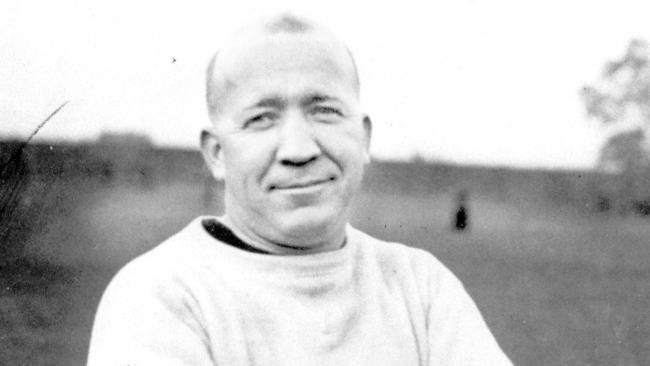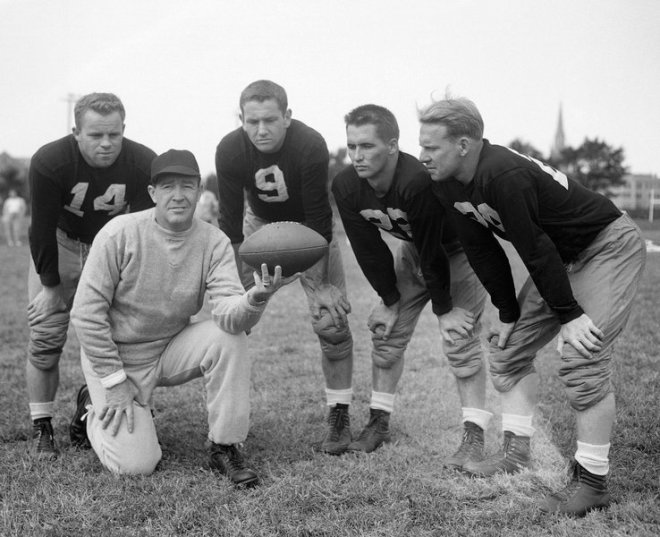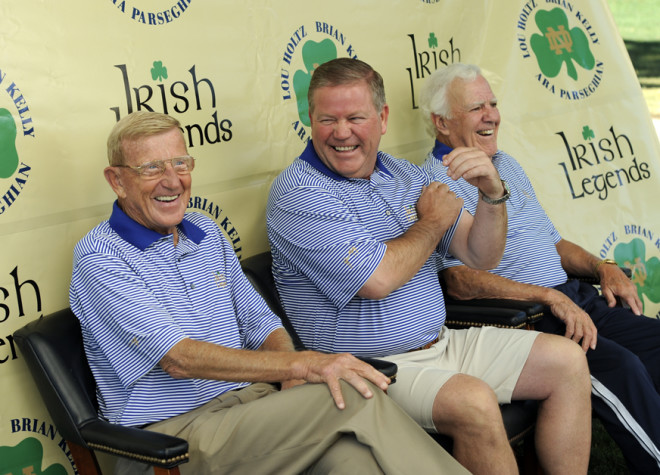Notre Dame's Symmetrical Football Mount Rushmore


A Mount Rushmore for major college football teams is a popular topic this summer at CBSSports.com. Assembling four figures for schools such as Alabama, Miami, Ohio State, Michigan, Texas, USC, etc., is a monumental task for such a Monument. Notre Dame likely would be the toughest of all.
The recent death of former Tennessee women’s basketball coach Pat Summitt also prompted North Carolina men’s basketball coach Roy Williams to note, “if there were a Mount Rushmore of coaching, Pat Summitt would certainly be included.”
Ultimately, I concluded that there cannot be a more symmetrical Mount Rushmore in college football — or any sport — that mirrors the four presidents represented on the South Dakota structure than four former football coaches at Notre Dame:
THE ALPHAS — George Washington/Knute Rockne
General Washington led his troops in battle, became the first president and is noted as The Father Of Our Country.
Likewise, Rockne was the captain of the 1913 team under Jesse Harper that suddenly found itself on the football map with a stunning 35-13 victory at West Point (keeping with Washington’s military theme).
It was Harper who set the groundwork for Rockne to make Notre Dame “America’s Team” in football, traveling from coast to coast to join the New York Yankees as the most famous brand athletically in the country during the 1920s and beyond.
From 1918-30, until his death in a plane crash on March 31, 1931, Rockne’s record of 105-12-5 — highlighted by consensus national titles in 1924, 1929 and 1930 — for an .881 winning percentage remains No. 1 in major college football history.
EXPANSION — Thomas Jefferson/Frank Leahy
While Washington was helping win the Revolutionary War (1775-1783), Jefferson authored the Declaration of Independence. While Rockne was leading the Fighting Irish in the 1920s, apprenticing under him as a player and coach was Leahy.
With Jefferson as the President, the size of the country doubled through The Louisiana Purchase (1803). Meanwhile, Leahy in only 11 seasons (1941-43, 1946-53) eclipsed Rockne in unbeaten seasons (six) and consensus national titles (four). Including his two seasons at Boston College in 1939-40, Leahy’s 107-13-9 record in 13 years as a head coach (same as Rockne) nearly matched his mentor’s 105-12-5 ledger. It is second on the all-time winning percentage chart (minimum 10 years coached).
Although Leahy wasn’t quite the Renaissance man like Jefferson — who was? — he possessed an erudite demeanor. Simple statements such as “we need to work on this” was stated with a more regal, “I will endeavor to obliterate the defects.”
PRESERVATION — Abraham Lincoln/Ara Parseghian
Washington led the formation of The Union, Jefferson led its expansion — and then in the 1860s, Lincoln saved it while guiding the nation through its darkest days in The Civil War (1861-65).
Likewise, Rockne made the Notre Dame brand powerful and famous, Leahy expanded it — and then in the 1960s, it was Parseghian who saved it after enduring its darkest days from 1956-63. The football team was 34-45 during that time, including 2-8 in both 1956 and 1960, and 2-7 the year before his first season in 1964. During the tough times, there was a perceived “civil war” at the school between academics and athletics.
Parseghian ushered in a rebirth during his 11-year term (1964-74) with two consensus national titles (1966 and 1973), a share of a third (1964, his third year) and he shepherded in a new and bountiful bowl era at the school with three wins over No. 1-ranked teams. His 95-17-4 record remains among the best ever at any school.
TOUGHNESS — Theodore Roosevelt/Lou Holtz
A forceful and charismatic leader as the United States’ 26th President from 1901-09, Roosevelt prided himself as one who when it came to foreign policy “speaks softly and carries a big stick.”
Holtz (1986-96) was noted for speaking softly about his teams, but bringing an ultra-physical, big stick approach on to the field. Both he and Roosevelt were highly dynamic, colorful and eminently quotable figures with a law-and-order demand.
Like Parseghian, Holtz resurrected the program from the ashes, highlighted by the 1988 national title, a school record 23-game winning streak, and a couple of debatable/controversial near misses in 1989 and 1993.
There is one other symmetry that makes the Notre Dame quartet the ideal Mount Rushmore of coaching at one program: Rockne began in 1918, Leahy in 1941, Parseghian in 1964 and Holtz in 1986 — almost 23 years apart for each.
Twenty-three years after Holtz began at Notre Dame his first season in 1986, current boss Brian Kelly was hired in December 2009.
A fifth coaching face on Notre Dame’s fictional football Mount Rushmore always could be added.
Tomorrow: A Notre Dame Mount Rushmore of players.
